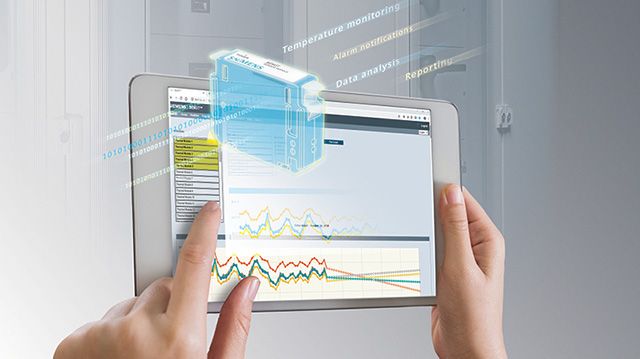Having spent over 15 years implementing thermal monitoring solutions across various industrial facilities, I can tell you that the difference between optimal performance and potential disaster often comes down to how well you monitor your thermal processes. Today’s thermal monitoring solutions have evolved far beyond simple temperature readings, incorporating advanced analytics and predictive capabilities that transform how we manage industrial operations.
Understanding Thermal Monitoring Solutions
At its core, thermal monitoring solutions encompass a comprehensive system of sensors, data acquisition hardware, and analytical software designed to track, analyse, and respond to temperature variations in real-time. These solutions serve as your facility’s nervous system, constantly monitoring thermal signatures across critical equipment and processes.
How Modern Thermal Monitoring Works
Sensor Technology
* Infrared sensors for non-contact measurement
* Thermocouples for direct temperature reading
* Resistance Temperature Detectors (RTDs) for precise measurements
* Thermal imaging cameras for comprehensive visual data
Data Acquisition
* High-speed sampling rates for real-time monitoring
* Multiple channel inputs for comprehensive coverage
* Digital signal processing for accurate readings
* Wireless connectivity for remote monitoring
Analytics and Processing
* Real-time data analysis
* Pattern recognition algorithms
* Predictive maintenance capabilities
* Historical trend analysis
Critical Applications Across Industries
Manufacturing
* Process temperature control
* Equipment health monitoring
* Product quality assurance
* Energy efficiency optimization
Power Generation

* Turbine monitoring
* Transformer temperature tracking
* Switchgear thermal analysis
* Cable hotspot detection
Data Centres
* Server room temperature monitoring
* HVAC system optimization
* Equipment cooling efficiency
* Thermal mapping of facilities
Benefits of Implementing Thermal Monitoring Solutions
1. Preventive Maintenance
* Early detection of equipment issues
* Reduced unexpected downtime
* Extended equipment lifespan
* Optimized maintenance scheduling
2. Energy Efficiency
* Real-time energy consumption tracking
* Identification of heat loss points
* Optimization of cooling systems
* Reduced operational costs
3. Safety Enhancement
* Prevention of overheating incidents
* Early fire risk detection
* Personnel protection
* Compliance with safety regulations
4. Quality Control
* Consistent process temperatures
* Product quality improvement
* Reduced waste
* Better yield rates
Key Considerations for Implementation
System Design
* Coverage requirements
* Sensor placement optimization
* Network infrastructure needs
* Data storage capabilities
Integration Requirements
* Compatibility with existing systems
* Communication protocols
* Data security measures
* User interface requirements
Maintenance Considerations
* Calibration requirements
* Sensor cleaning and maintenance
* Software updates
* System health monitoring
Best Practices for Thermal Monitoring
1. Strategic Sensor Placement
* Identify critical monitoring points
* Consider environmental factors
* Ensure proper coverage
* Account for accessibility
2. Data Management
* Establish sampling rates
* Define storage requirements
* Implement backup systems
* Create data retention policies
3. Alert Configuration
* Set appropriate thresholds
* Define escalation procedures
* Configure notification systems
* Establish response protocols
4. System Maintenance
* Regular calibration checks
* Sensor cleaning schedules
* Software updates
* Network maintenance
Future Trends in Thermal Monitoring
AI and Machine Learning
* Predictive analytics enhancement
* Pattern recognition improvement
* Automated response systems
* Self-learning capabilities
IoT Integration
* Enhanced connectivity
* Remote monitoring capabilities
* Real-time data access
* Mobile device integration
Advanced Visualization
* 3D thermal mapping
* Augmented reality integration
* Interactive dashboards
* Real-time visualization
Common Challenges and Solutions
Environmental Factors
* Dust and dirt interference
* Temperature extremes
* Electromagnetic interference
* Vibration effects
Technical Issues
* Sensor calibration drift
* Network connectivity problems
* Data storage limitations
* Software compatibility
Implementation Success Factors
* Thorough planning and assessment
* Proper system design
* Quality equipment selection
* Professional installation
* Regular maintenance
* Staff training
* Documentation
For facilities looking to implement or upgrade their thermal monitoring solutions, working with experienced providers like Power Technologies ensures access to cutting-edge technology and expert support. Remember, effective thermal monitoring solutions are not just about installing sensors – they’re about creating a comprehensive system that enhances safety, efficiency, and reliability across your entire operation.
As industries continue to evolve and demand more sophisticated monitoring capabilities, thermal monitoring solutions will remain at the forefront of operational excellence and risk management. The key is selecting the right solution and partner to help you achieve your specific monitoring objectives.



